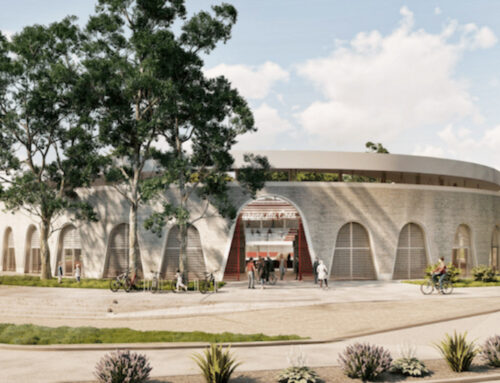The digital transformation of cities is driving new technological solutions to improve urban management, sustainability, and citizen safety. In this context, public address systems for smart cities emerge as an essential component within public communication infrastructures. Beyond simply broadcasting voice messages, current systems integrate smart functionalities, IP connectivity, and automation capabilities, making them key tools for efficient, real-time communication in urban environments.
In this article, we explore how public address systems for smart cities are evolving within the framework of smart cities, their practical applications, benefits, and key technical aspects for proper implementation.
What is a public address system for smart cities?
A public address system for smart cities is a sound communication system designed to integrate into the technological infrastructures of smart cities. These systems allow centralized or decentralized message broadcasting through speakers distributed throughout the urban environment, connected via IP networks and managed from cloud-based platforms or local servers.
Unlike traditional systems, public address systems for smart cities feature advanced capabilities such as:
- Remote control from mobile devices or command centers.
- Message scheduling automatically or in real time.
- Interconnection with sensors, cameras, alarms, and emergency systems.
- High audio intelligibility, even in noisy environments.
- Scalability to adapt to different areas of the city.
Applications of smart public address systems in urban environments
1. Safety and emergencies
In critical situations such as fires, accidents, or threats to public safety, public address systems for smart cities enable the immediate broadcast of evacuation messages, warnings, or instructions. These systems can be triggered automatically through sensor integration or manually from control centers. Their reliability and coverage are key to reducing response times and saving lives.
2. Public information
Public address systems for smart cities are used to inform the population about traffic disruptions, public events, changes in urban transport, or weather alerts. This functionality contributes to better urban organization and a more informed, safer population.
3. Tourism and cultural promotion
In tourist or heritage areas, smart public address systems can integrate with guided tour systems, offering automated explanations in several languages, promoting events, or providing directions to visitors.
4. Public transport management
In stations, interchanges, or smart bus stops, audio systems communicate schedules, incidents, or usage recommendations. Furthermore, their integration with transport management systems improves service efficiency and enhances user experience.
Advantages of public address systems in smart cities
- Immediate and centralized communication, improving emergency response times.
- Wider coverage thanks to IP speaker networks, which can be installed on lamp posts, stations, or urban furniture.
- Reduced operational costs by avoiding unnecessary travel or manual intervention.
- Improved accessibility through audio messages that support mobility for visually impaired individuals.
- Flexibility and scalability, allowing the system to be expanded or downsized according to the needs of each area or municipality.
Technical aspects and requirements for efficient installation
To ensure the proper operation of a public address system in a smart city, several technical elements must be considered:
- IP or PoE speakers (Power over Ethernet): easy to install, enable digital audio transmission and electrical power through a single cable.
- Centralized control systems: software that allows zone management, message scheduling, volume control, and device status monitoring.
- Secure connectivity: IP networks require encrypted protocols to prevent unauthorized access.
- Weather resistance: equipment must be protected against water, dust, and vandalism (e.g., IP66 rating).
- Compatibility with open protocols: such as SIP, ONVIF, or Dante, to facilitate integration with other security or IoT systems.
At Fonestar, we develop solutions that meet these requirements, adapting to each project with scalable, secure systems offering the best sound quality.
Successful installations and future trends
More and more municipalities and public bodies are incorporating public address systems for smart cities into their digitalization plans. Successful cases in Spain and Europe include:
- Installations in coastal towns, where IP public address systems are used to broadcast information about beaches, tides, and services.
- Early warning networks in seismic or fire-prone areas, integrated with sensors and drones.
- Pilot smart city projects that combine public address systems, LED lighting, surveillance cameras, and Wi-Fi hotspots into a single connected streetlight infrastructure.
In the future, wider adoption of technologies such as artificial intelligence or predictive analytics is expected in public address systems for smart cities, enabling message broadcasts based on automatic detection of anomalous situations.
Conclusion
Public address systems for smart cities represent a key evolution in urban communication. Their ability to integrate with intelligent systems, reliability in emergencies, and flexibility for multiple applications make them an essential tool for improving safety, efficiency, and quality of life in urban environments.
At Fonestar, we continue to invest in the development of professional audio solutions tailored to the present and future needs of our smart cities.





